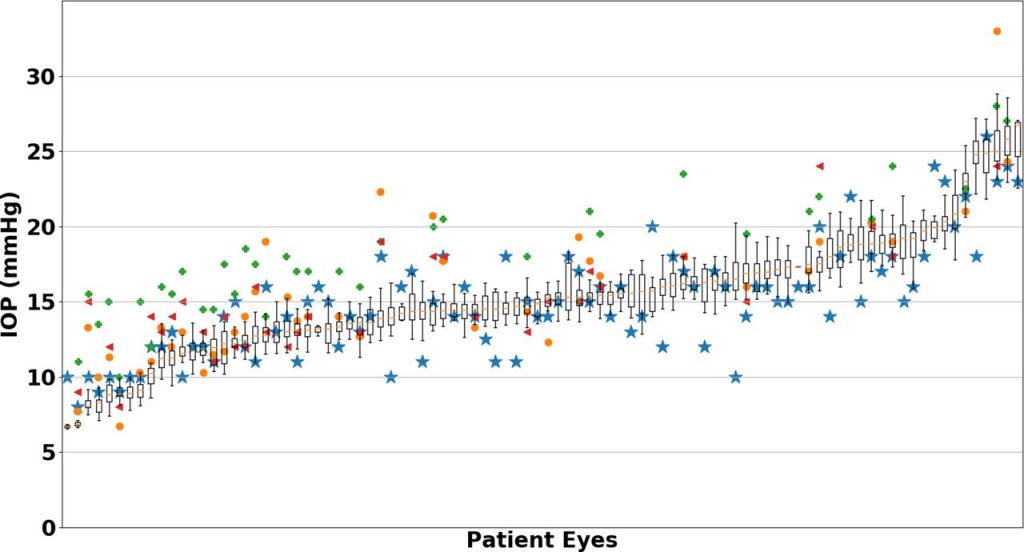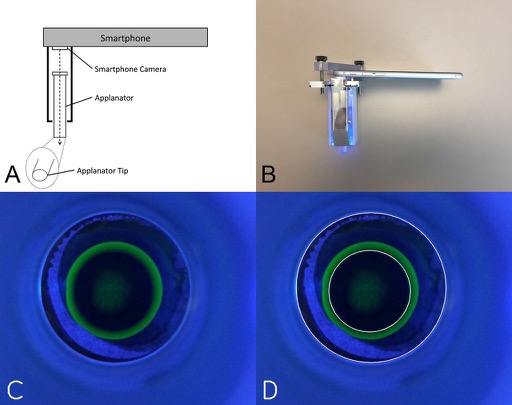Access to eye care in more rural and remote areas can be challenging, because ophthalmologists need certain types of examination equipment that can be large and difficult to transport. Advances in smartphone technology are helping to address this problem - better cameras, software, and hardware attachments have the potential to allow ophthalmologists to bring a portable examining room to previously underserved areas.
Tonometry is the measurement of intraocular pressure. Elevated intraocular pressure is an early indicator of glaucoma, which is a major cause of blindness around the world. Our lab developed a portable cellphone device that uses a fixed-force tonometry attachment, the cellphone's camera, and a machine learning algorithm to analyze the captured video to measure intraocular pressure.
Using the device is fairly simple. Some fluorescent dye is first applied to the eyes in the form of drops. The device then applies a small amount of pressure to the eye and then measures the circumference of the resulting "impression" on the surface of the eye using the cellphone video camera with the flash, to which a blue light filter is added. Measurement of this impression, or the degree to which the surface of the eye flattens in response to the fixed amount of pressure, can be used to calculate the pressure inside the eye. We developed a machine learning algorithm to accurately detect this measurement from the acquired video and then calculate the intraocular pressure

The challenge for the algorithm was to accurately detect and measure the fluorescent impression from the videos, even when the patient is moving or other variations in the video occur. We compared the performance of the cellphone tonometer to the gold standard method for measuring intraocular pressure, Goldmann applanation tonometry (GAT), as well as to other types of tonometers. The smartphone tonometer achieves comparable IOP measurements to GAT, which is considered the reference standard and compared favorably with a number of other clinical devices.

These first results are a proof of concept study. As part of future work, we are using the successfully segmented frames from our unsupervised machine learning method as labelled data for a deep learning algorithm to make the automatic detection of circles and thereby calculation of IOP more robust in different use conditions. We hope the smartphone-based tonometer will complement other existing smartphone hardware attachments and apps to facilitate a portable ophthalmological examination, which may improve access to ophthalmological care in resource-poor regions.
Wu Y, Luttrell I, Feng S, Chen PP, Spaide T, Lee AY, Wen JC. Development and validation of a machine learning, smartphone-based tonometer. Br J Ophthalmol. 2019 Dec 23;. doi: 10.1136/bjophthalmol-2019-315446. [Epub ahead of print] PubMed PMID: 31871048.

